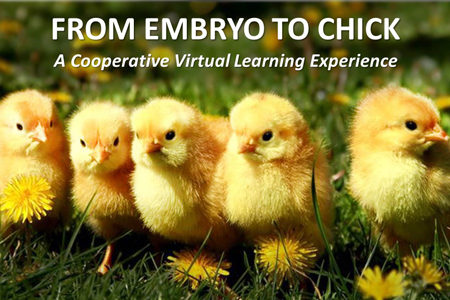
Because of school closures during the pandemic, elementary school embryology programs are not presented in classrooms. To fill the gap, The Livestock Conservancy, of which Cackle Hatchery® is a member, has teamed up with North Carolina 4-H Extension to develop a virtual learning experience.
The series is called “From Embryo to Chick” and is offered free on YouTube. Although it is intended for youngsters, it is equally informative for all newbie chicken keepers. Here are the subjects covered in this video series:
The first video in this series is presented by Victoria Brewer, Chatham County (North Carolina) 4-H Extension agent. Ms. Brewer explains what germs are, how germs spread, the does and don’ts of handwashing, and why proper handwashing is important. The information presented in this 8½-minute program is not only essential for chicken keepers but is especially timely during the COVID-19 pandemic.
The second video features Jeanette Beranger, the Conservancy’s senior livestock manager. Ms. Beranger explores how to choose and set eggs for hatching and looks at the basic operation of both tabletop and cabinet incubators. In this 14-minute video she also discusses the hazards of shipping eggs and the importance of keeping records during incubation.
In this 11-minute program, Ms. Brewer discusses what an egg candler is and what it’s used for, and how to build your own egg candler with items found around the house.
Playing Peek-a-Boo with Embryos
This nearly 12-minute video starts with a must-see animation showing how a chick develops inside an egg during incubation. Then Ms. Beranger shows how to make an egg candler using a cell phone and a piece of toilet paper roll, and how to use it to examine the development of eggs after 12 days in an incubator.
In about 8 minutes, Ms. Brewer discusses the composition of a chicken egg and demonstrates two ways to compare the difference between fertilized and unfertilized eggs.
Ms. Beranger explores different types of chickens to choose from, the differences between egg layers and meat birds, the importance of a breed’s adaptation to climate, and the differences between heritage breeds and hybrid chickens. This 15½-minute video finishes with a showcase of breeds, showing the wonderful diversity of breeds to choose from.
In about 3 minutes Ms. Brewer explains the requirements of a brooder, or temporary housing, for newly hatched chicks and shows a fast and easy way to assemble a functional brooder.
Chicken Time on Jeanette’s Farm
In this 5½-minute virtual visit to her chicken farm, Ms. Beranger introduces some of her Crevecoeur chickens and offers a bit of history about them.
Ms. Brewer offers a 7-minute overview of various careers related to poultry and the poultry industry, from farm to table.
In this 7-minute video, Ms. Beranger introduces newly hatched chicks from two heritage breeds, Dominique and Crevecoeur. She explains how to use a toe punch to identify which hatch each chick came from and who its parents are and shows how to move newly hatched chicks from the incubator to the brooder.
In about 7 minutes, Ms. Brewer shows how a chick breaks through the shell when it’s ready to hatch, how it reacts to finally being free of the shell, and how cute it looks after it’s all dried out and fluffed up. Then she shows how to tally the final count of hatched and unhatched eggs to determine the hatch rate percentage.
In this 17½-minute program, Ms. Beranger discusses preparations for moving chicks from the brooder to the coop, including necessary features regardless of the specific coop style.
In this final nearly 3-minute video, Ms. Brewer transports her 24-day old chicks to their new home at a nearby farm, where she introduces some of the farm animals, including a donkey, goats, chickens, and guardian dogs.
In addition to the chicken embryology video series, The Livestock Conservancy offers downloadable print materials including two Embryology Participant Guides and a Heritage Breed Chicken Coloring Book. Available from Cackle Hatchery are a poster 3-pack that includes an Embryology poster, a Guide to Egg Layers poster, and an Assorted Breeds poster.
These chicken embryology and breed materials are ideal for home schooling, and a fun and educational way to pass time during lockdown. The video series needn’t be watched in sequential order, so you can choose whichever topics might interest you the most.
And that’s today’s news from the Cackle Coop.
Gail Damerow is the author of Storey’s Guide to Raising Chickens. Photo courtesy of The Livestock Conservancy.

